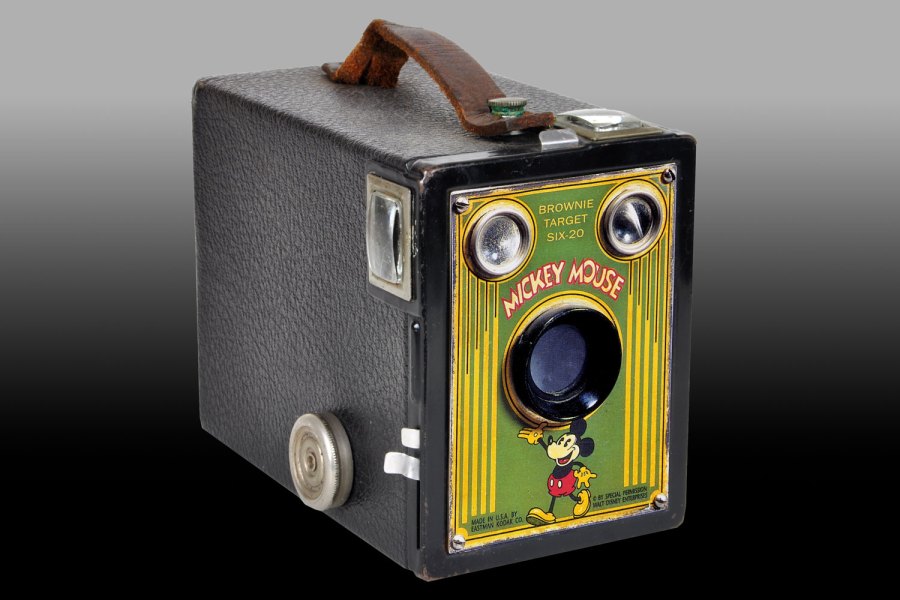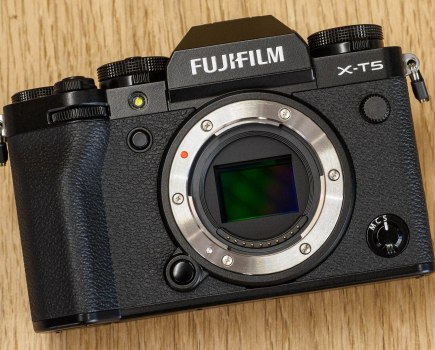Camera collecting mysteries don’t come much more mysterious than the great Mickey Mouse Camera Mystery. It began in 1995 when an unusual Kodak Brownie Target Six-20 box film camera came up for auction in London. What made it different was the faceplate surrounding the lens. Instead of the usual black and silver Art Deco design, the faceplate was coloured yellow and green. Curved across the top of the lens were the words Mickey Mouse, and Mickey himself strode across the bottom beneath the lens. The lower left-hand corner bore the words Made in USA by Eastman Kodak Ltd and, in the lower right-hand corner, appeared the words © Special Permission Walt Disney Enterprises. The mystery was that neither Kodak nor Disney had any knowledge of the camera.
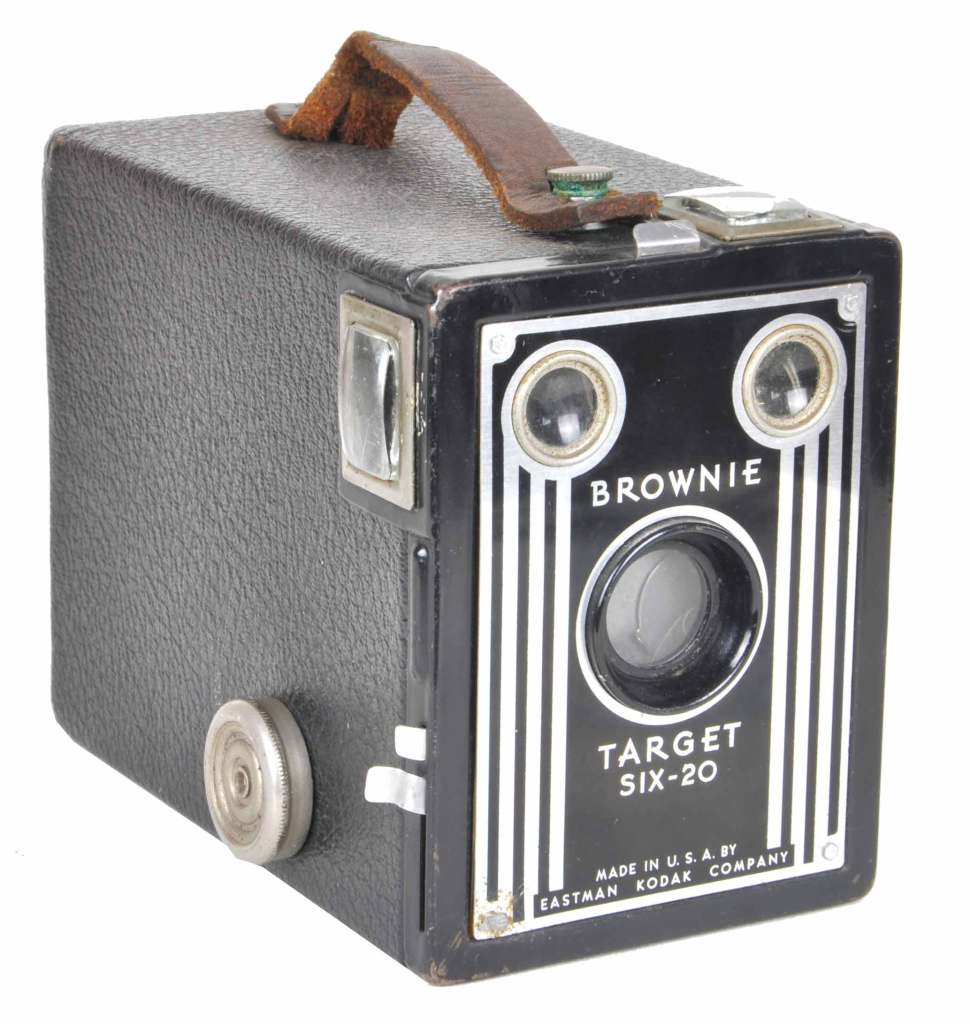
Auction staff, researching its authenticity, contacted Eastman Kodak Company, George Eastman House and the Disney Archives. None had any record of the camera. Three of the world’s top Kodak collectors who were also contacted confessed to knowing nothing about the camera. In short, no one could confirm it was authentic. But no one could say that it wasn’t.
Despite the uncertainty of the camera’s provenance, which was clearly stated by the auctioneers in its sales catalogue, bidding was fierce, particularly between two telephone bidders. Neither had an issue with the authenticity – or lack thereof – and the camera sold for £4,500, plus 12.5% buyer’s premium VAT-rated at the then 17.5%, making a total of more than £5,000 paid by the buyer.
So, the auction house was happy, the winning bidder was happy and that might have been the end of matters, had it not been for a second camera that came up for auction a few years later. And that led to a new twist.
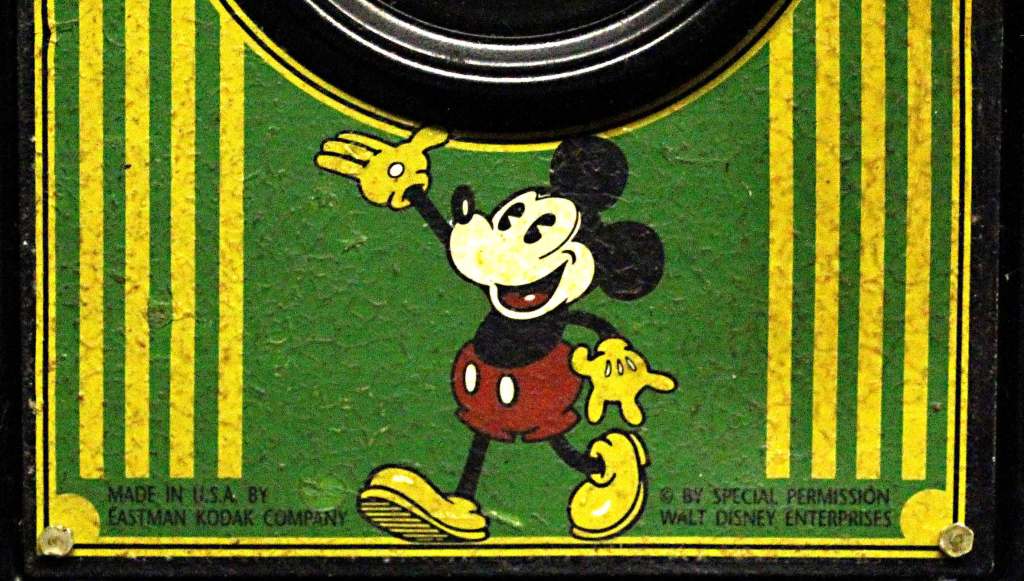
Suspicions of fakery
Bidding at the second auction was robust, though, in the absence of the previous two competitive bidders, the final hammer price was lower than before, somewhere in excess of £1,500. The camera was bought by a collector in the Netherlands. He had been one of those experts previously contacted about the first camera and, at that time, had not been able to confirm or deny its authenticity. With the second camera in his hands, however, he began to have doubts.
Suspicions were aroused when he noticed a light white smear over the viewfinder glasses, and recognised it as a residue left behind as glue evaporates in proximity to glass in an enclosed space. When the faceplate was unscrewed it was discovered that the Mickey Mouse faceplate had been stuck to the reverse side of a normal Brownie Target faceplate, presumably because the Art Deco design on the front of some (but not all) of the original faceplates was slightly raised, and a smooth surface was necessary for the plates to successfully adhere. The two faceplates had then been screwed back onto the body, this time with Mickey Mouse in front. To the experienced eye of the collector, it was evident that superglue had been used for sticking the two plates together – and there was no such thing as superglue at the time the camera was alleged to have been made.
Armed with photographs of his evidence, the collector returned the camera to the auction house and, after due process, his money was refunded.
But the story didn’t end there
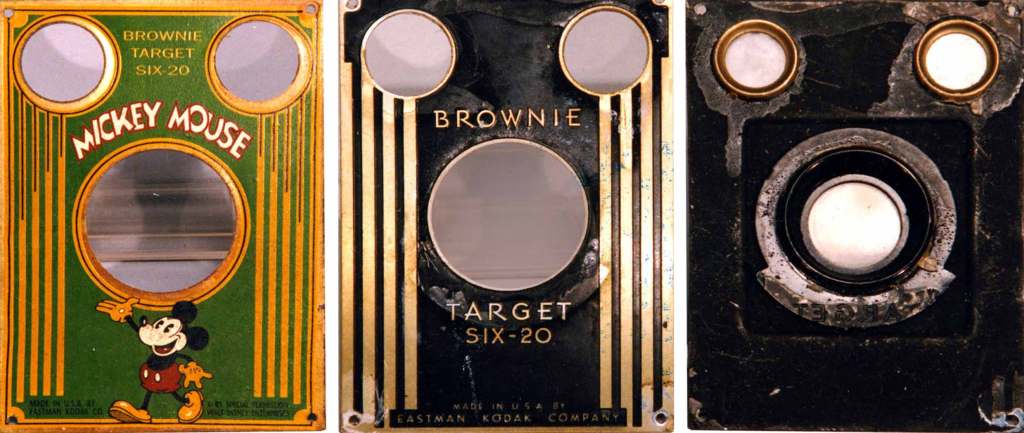
A bit of history
To understand more about this mystery, you need to look at some dates. The camera began life in 1941 as the Kodak Target Brownie, sold in two versions for different film sizes: the Six-16 and the Six-20. In 1946 Kodak changed the name from Target Brownie to Brownie Target. The Six-16 was discontinued in 1951, and the Six-20 ceased production in 1952.
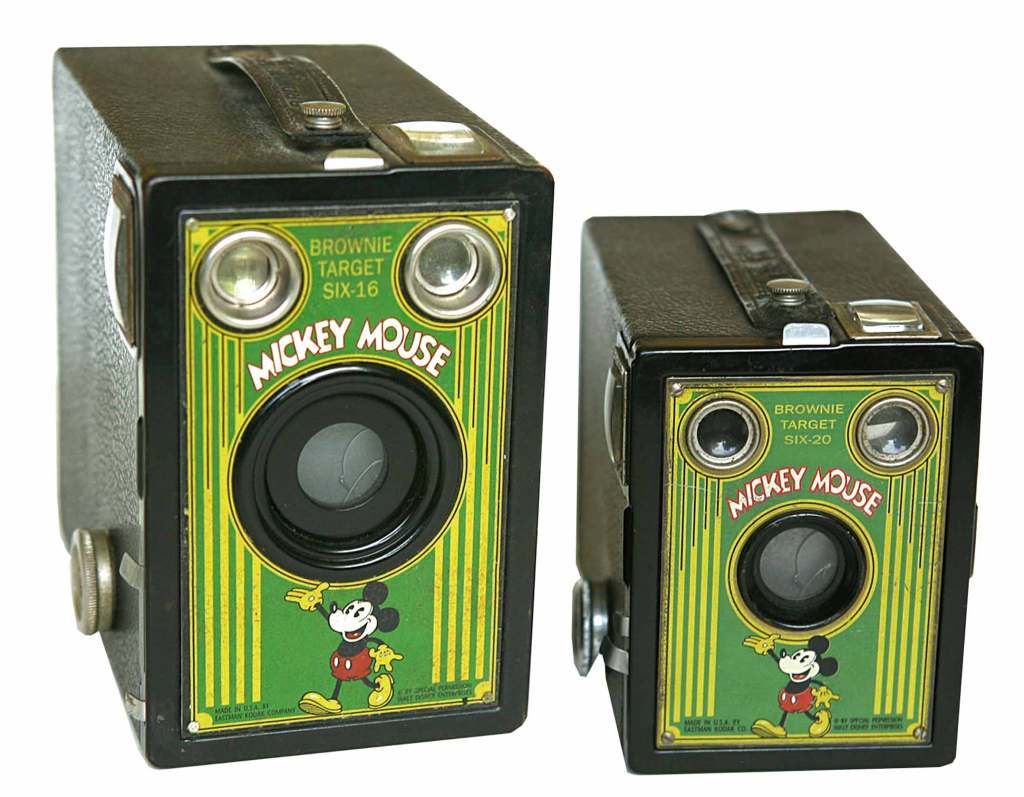
Mickey Mouse first starred in a film called Steamboat Willie, made in 1928. At first, for ease of animation, Mickey’s body was formed from two circles, while his eyes were shown as solid black with small, triangular catch- lights in them. In a 1939 film called The Pointer, the shape of Mickey’s body was changed slightly but more distinctively, his eyes became white with small black pupils. In 1938, Walt Disney Enterprises merged with other Disney companies to form Walt Disney Productions. So, to sum up:-
- Target Brownie is 1941.
- Brownie Target is 1946.
- Mickey with black eyes and white catchlights is pre-1939.
- Mickey with white eyes with black pupils is post-1939.
- Walt Disney Enterprises is pre-1938.
- Walt Disney Productions is post-1938.
Got that? Okay. So, given that the mystery camera is called a Brownie Target (post-1946), why did the wording on the faceplate refer to Walt Disney Enterprises, a name that was abandoned in 1938? And why was Mickey Mouse drawn in his pre-1939 style?
Both would make a sort of sense if the project had begun in the 1930s and been delayed, possibly because of World War II from 1939-1945. But if that was the case, how would a pre-war designer know to use the post-war Brownie Target name on the faceplate? And even if all that was
accounted for, why did the first camera not come to light until 1995? It all pointed to fakery. But then…
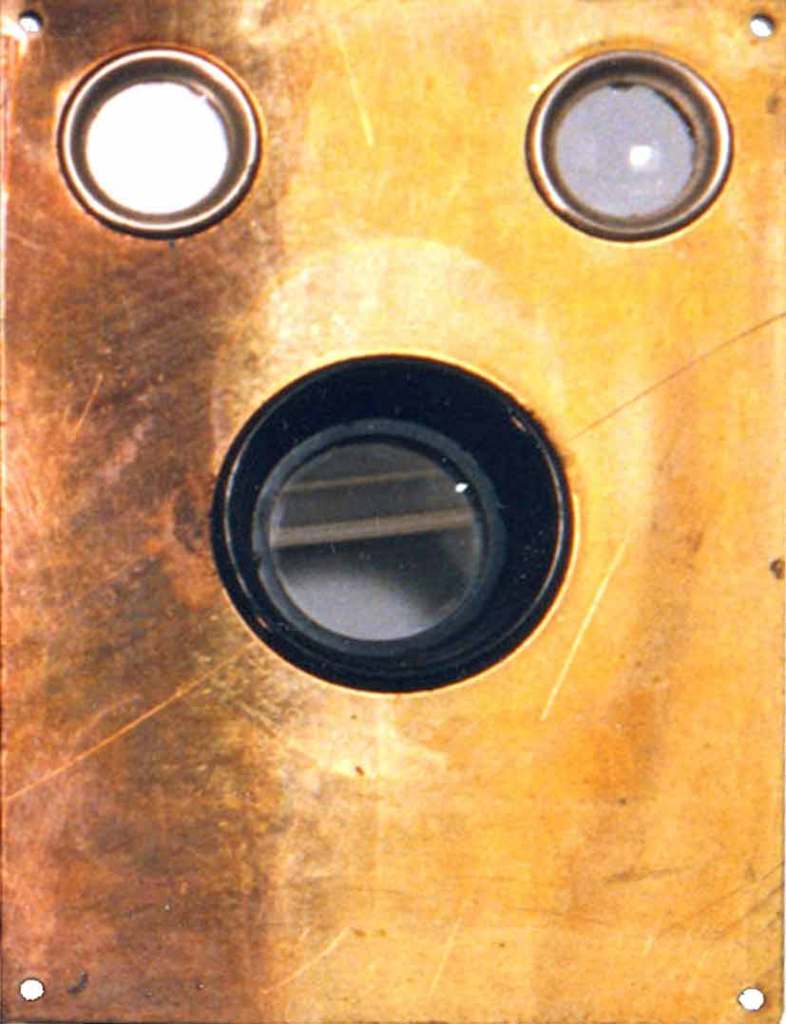
Fake or fortune?
Just when the general consensus was swinging towards the cameras being fakes worth a lot less than had originally been thought, something else happened which gave new credence to their authenticity. Boxes began to emerge, and prices started to soar again. One eminent American collector, known for having probably the best Kodak collection in the world, was soon handing over $5,300 for a Six-20 Mickey Mouse camera in its box.
The very few boxes that have been seen were for the Six-20 cameras, never for the Six-16 models. They were made of cardboard in two colours akin to mustard and maroon and, according to the aforementioned American collector who owns such a box, the cardboard is different from anything he has seen used before by any camera manufacturer.
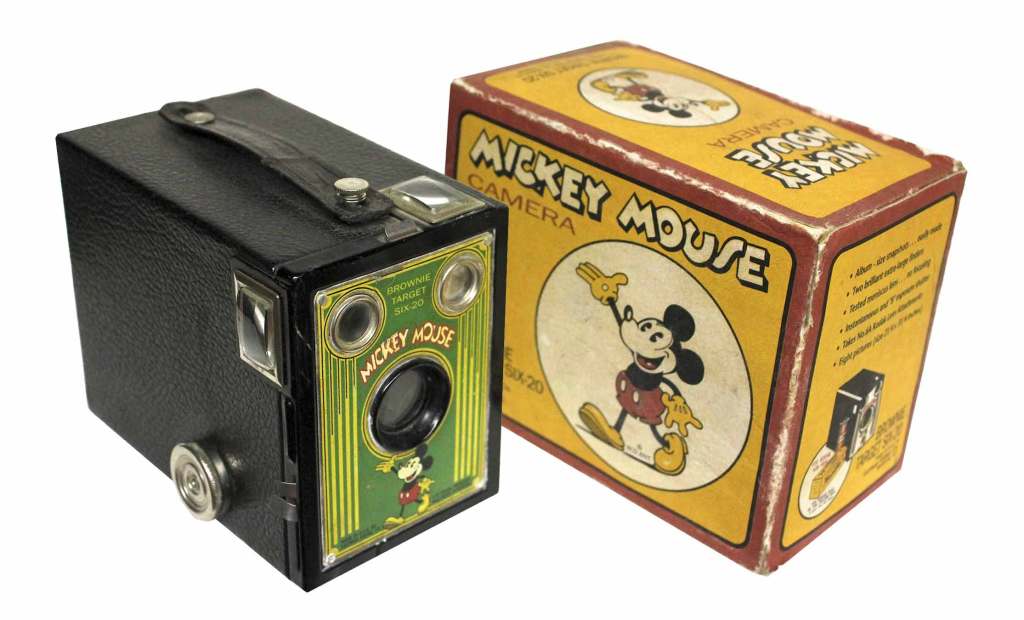
Strangely, the Mickey Mouse name on the box was also slightly different in style to the way it was displayed on the camera. On the camera, the ‘I’ in ‘Mickey’ overlapped the ‘M’ and ‘C’. On the box, it overlapped the ‘C’, but fell a little under the ‘M’. Also the ‘S’ in ‘Mouse’ was a very different, stylised shape, consistent with the way it was written in the title on an English children’s comic called Mickey Mouse Weekly. The style of the comic’s title changed several times during its life, but the name with the stylised ‘S’ was the way it appeared when first published in 1936, again suggesting pre-war origins for this seemingly post-war camera.
And there’s more
Whether genuine articles from a forgotten Kodak/Disney partnership, or outright fakes, the truth is that, since the 1990s, more of these cameras have slowly emerged around the world, a few of them with their original boxes.
In the Netherlands the collector who gave up what he had concluded was a fake, went on to buy two more – a Six-20 and a Six-16 – from the estate of a different and extremely eminent American collector and author known for his encyclopaedic knowledge and love of box cameras. The new owner, who had previously proved one of the cameras was a fake, is pretty much convinced these latest cameras are genuine.
In America, one collector bought a Six-20 in what he was convinced was its original box from a fellow collector and then a Six-16 on eBay. The same collector claims he has seen faceplates without cameras in America, reinforcing the theory that some pre-war faceplates have been fitted to later cameras.
In France, one was spotted, some years ago, at a large open-air camera fair. Others, not known to be genuine or fakes, have been seen in Belgium. One other, in poor condition and with the wrong camera strap, appeared on eBay from a seller in Austria a few years back. It attracted the sterling equivalent of £203 in bids, but failed to reach its reserve.
Maybe the last word is best left to a Disney Archives spokesman who, when questioned on the subject, stated: ‘Unfortunately, we have no additional information on the Kodak camera in question; it is a subject that we are still seeking to learn more about.’
The real thing
Not every camera bearing the Mickey Mouse emblem is as contentious as the Brownie Targets. Here are just a few examples of other Mickey cameras…
The Ensign Mickey Mouse Camera marked Mickey’s first appearance on a UK camera in 1935. It was a box camera with Mickey Mouse embossed into the leatherette and a red and silver decal (today often missing) depicting Mickey on the front. A wire frame viewfinder pulled out from the side.
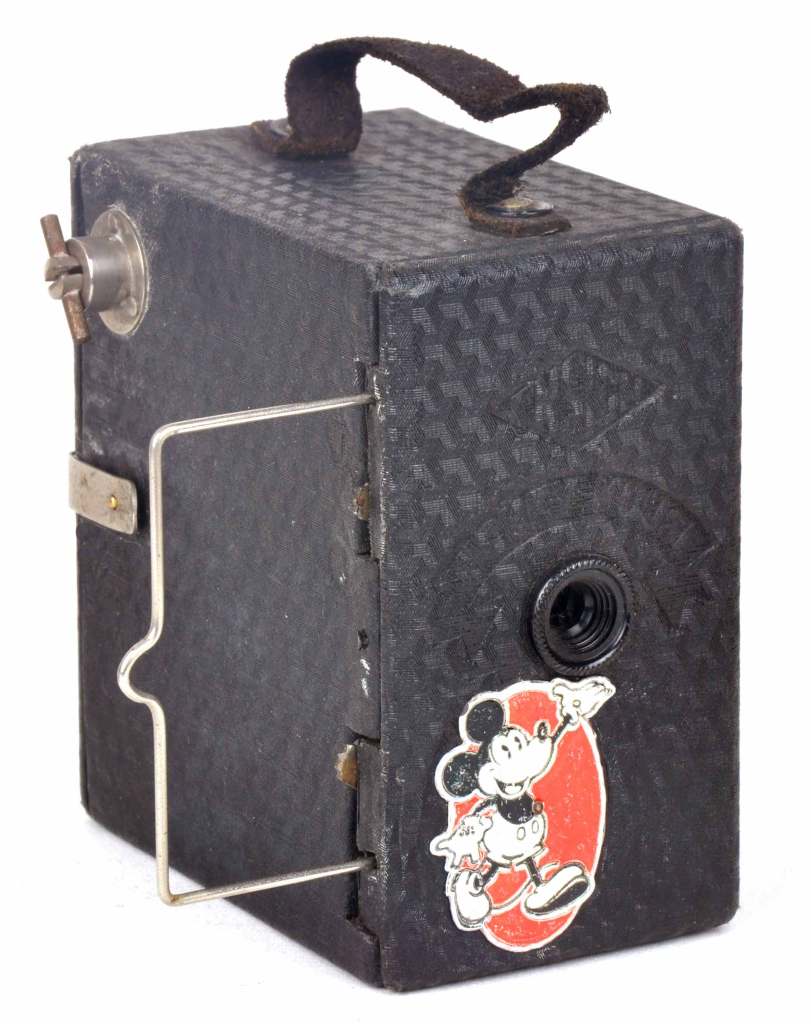
The Kunic Mickey Mouse Camera from 1958 was a red and chrome subminiature model that used 17.5mm roll film. It was displayed by dealers, held by a cardboard cut-out of Mickey. Today, these cameras are rare – due, it is said, to being made without Disney permission, meaning they soon had to be removed from distribution.
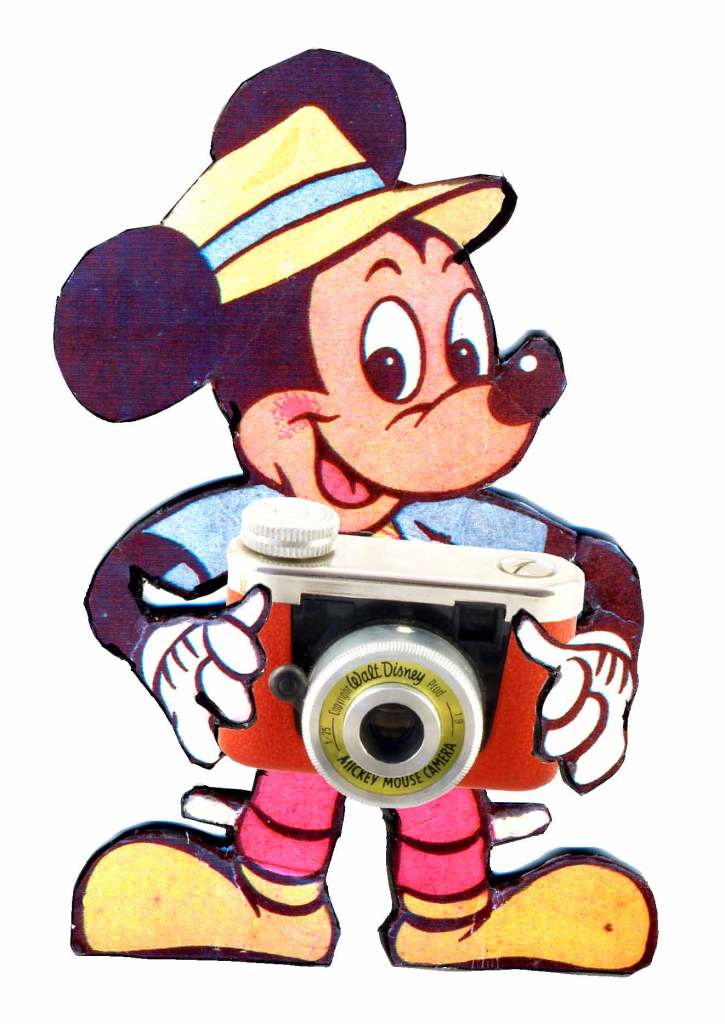
The Mick-a-Matic was made in America in 1971 in the shape of Mickey’s head with a lens that looked though his nose. Inside was a 126 film cartridge instamatic camera.
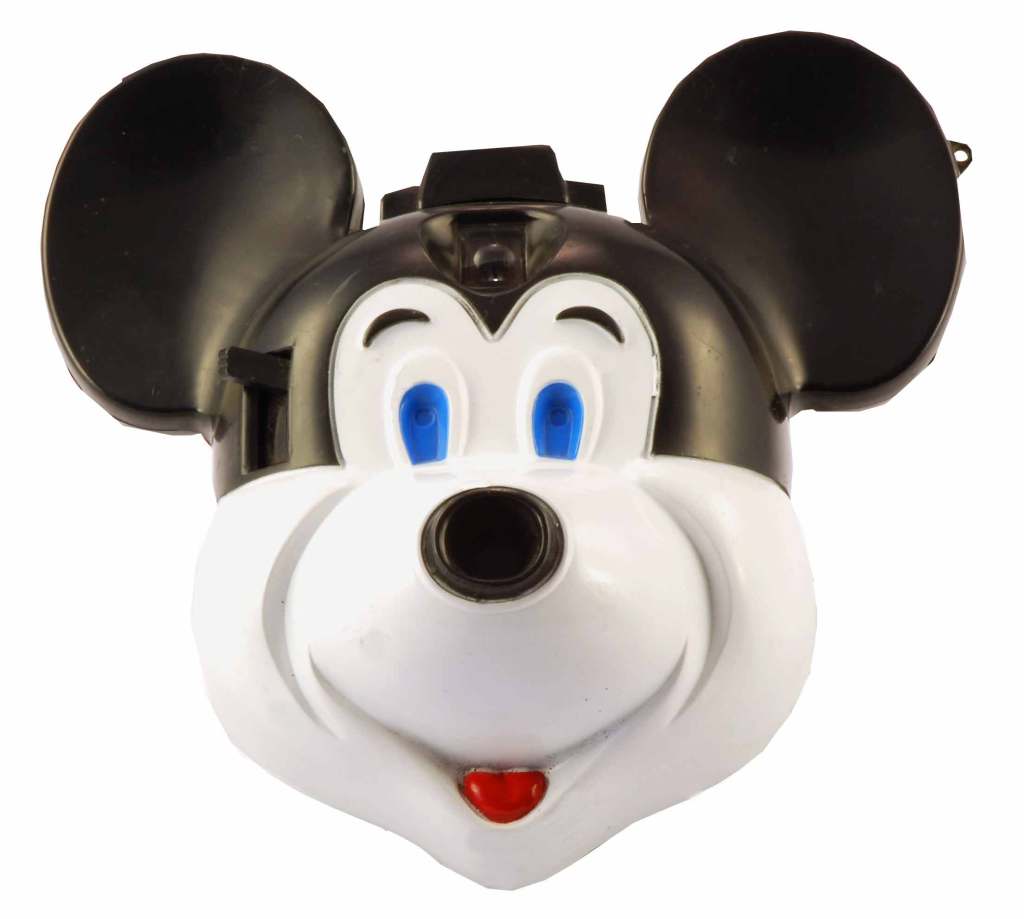
The Helm Mickey Mouse Camera, from the 1970s and also for 126 instamatic film, came from an American toy company. It showed Mickey straddling a toy train with a lens in the front. The camera also depicted Donald Duck, holding a notice, saying, ‘Smile’.
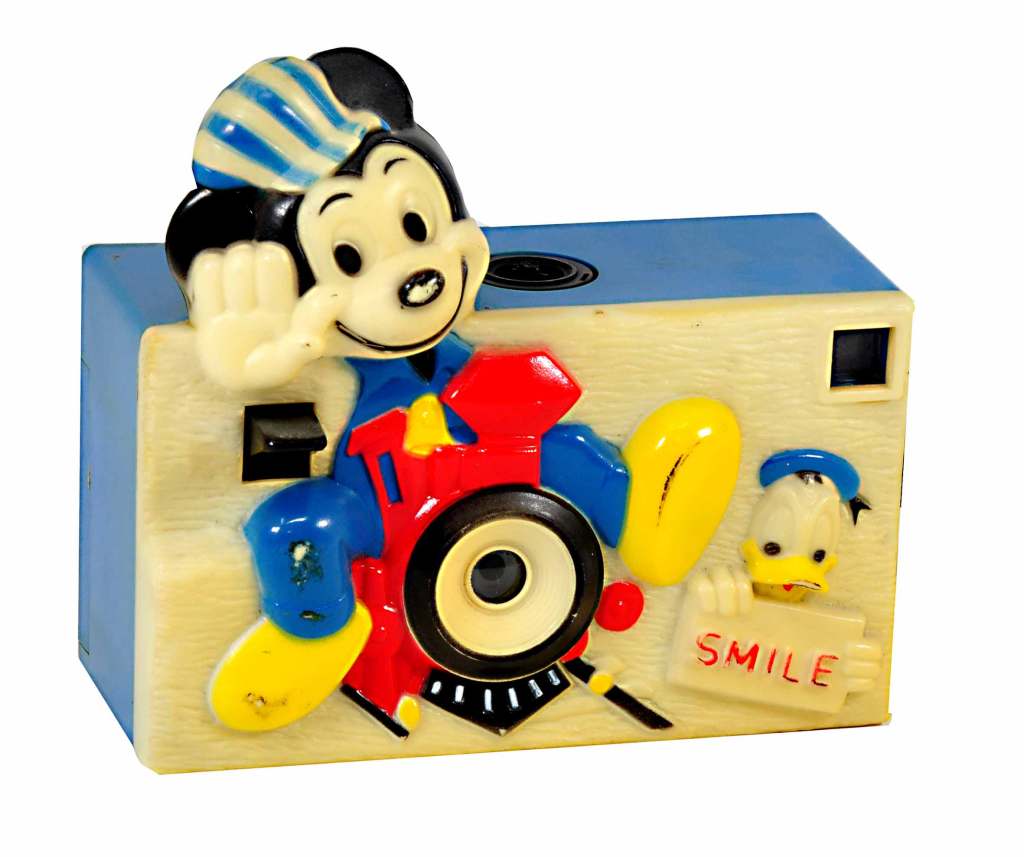
Mickey-Matics were basic 110 film snapshot cameras made in the 1980s They took the traditional 110 camera shape and were made in two models, coloured pink and blue.
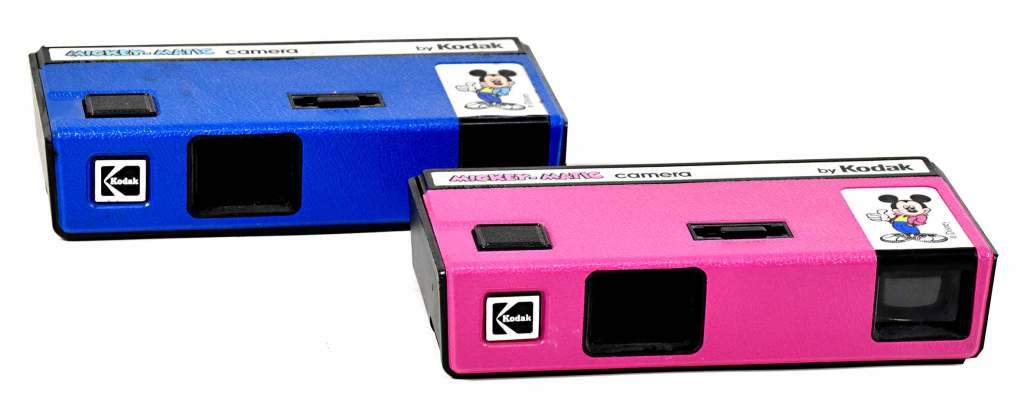
Acknowledgements
For information and pictures my thanks to Netherlands-based collector Ruud Hoff; American Kodak collector Charlie Kamerman; staff at the George Eastman Museum and Disney Archives in the US.
Related reading:

